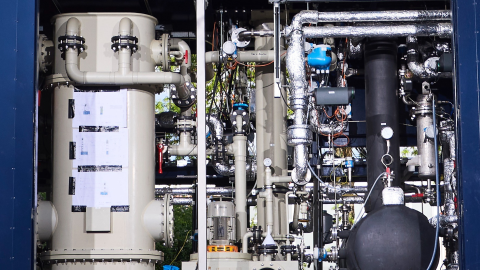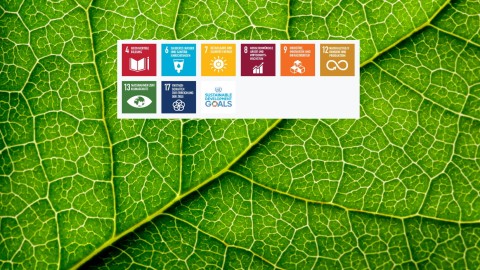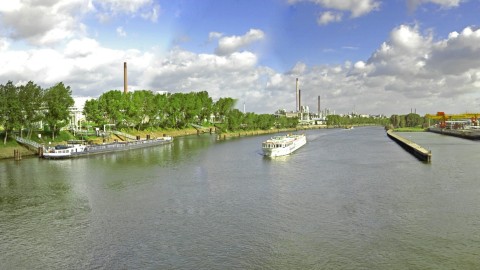Carbon capture pilot plant at Industriepark Höchst
Infraserv Höchst has commissioned a carbon capture pilot plant at Industriepark Höchst's sewage sludge incineration plant to gather data and experience on the feasibility of capturing CO₂ from flue gases.
For this project, we have teamed up with the Düsseldorf-based and internationally active GEA Group to explore the potential of the carbon capture process at Industriepark Höchst. To this end, GEA has delivered the pilot plant in a container to Industriepark Höchst, which Infraserv will rent for a period of three months. The main objective is to evaluate the energy requirements, efficiency and costs of a large-scale separation system at an incineration plant.
‘Pilot plants of this type are essential for testing the process and collecting the necessary data in order to operate our own, larger carbon capture plants at Industriepark Höchst in the future.’
Joachim Kreysing, Managing Director of Infraserv Höchst
Focus on biogenic CO₂
The sewage sludge incineration plant was deliberately chosen because some of the CO₂ is of biogenic origin. Infraserv Höchst plans to supply this CO₂ to startups so that they can use it in their syntheses together with low-carbon energies such as green hydrogen and green electricity. Biogenic CO₂ plays a key role in carbon capture and utilisation (CCU) because, unlike fossil CO₂, it is considered climate-neutral - it comes from renewable raw materials and was previously removed from the atmosphere by plants. This means that biogenic CO₂ enables the climate-neutral production of chemical products, fuels and materials whose carbon footprint would otherwise be negative, and supports the transformation of the chemical industry towards a greenhouse gas-neutral circular economy.
How is CO₂ separated in the pilot plant?
A small partial flow of flue gas is extracted from the chimney at the waste incineration plant. This flue gas is fed into the pilot plant. During CO₂ separation with amines, the CO₂ is washed out of the flue gas. The flue gas is brought into contact with a liquid, an amine-water mixture, which absorbs the CO₂. This liquid is then heated so that the CO₂ is released again. The aim is to determine data on the separation rate, the purity of the CO₂, the decomposition of the detergent and the energy requirement.
Pilot plant as part of an EU project
Carbon capture can make an important contribution to the sustainable transformation of Industriepark Höchst if the technical, economic and regulatory framework conditions are right." The method has the potential,
- further reduce CO₂ emissions,
- conserve fossil resources,
- and to support circular economy concepts.
The pilot plant is supported and partly financed by the EU project IS2H4C (From Industrial Symbiosis to Hubs for Circularity). This focuses on the use of systemic industrial symbioses through innovative technologies such as carbon capture and electrolysis. In addition to carbon capture, Infraserv Höchst is also involved in methanol synthesis and waste heat utilisation as part of the EU project.
Infraserv has experience with innovative CO₂ utilisation
Carbon Capture and Utilisation (CCU) is nothing new for Infraserv Höchst. A few years ago, the CO₂ captured at the biogas upgrading plant in Industriepark Höchst was processed into emission-free oils and waxes in the ICO2CHEM research project in collaboration with partners. Infraserv Höchst now supplies this CO₂ to INERATEC's pioneering power-to-liquid plant, which recently went into operation. This plant converts CO₂ into synthetic fuels, such as e-kerosene, in combination with hydrogen. In the chemical industry, CCU enables the use of separated CO₂ for syntheses, for example for the production of methanol or plastics.
‘We want to create the best conditions at Industriepark Höchst to enable our customers to move towards sustainability. This also includes the different ways in which CO₂ can be utilised.’
Joachim Kreysing, Managing Director of Infraserv Höchst
Would you like to find out more about the technology and the possibilities of CO₂ capture?
Ask our experts about the Infraserv carbon capture pilot project!








